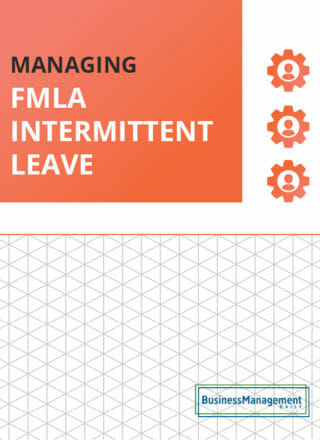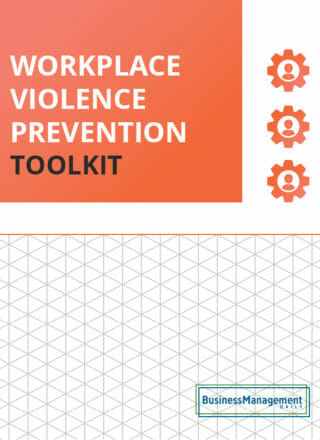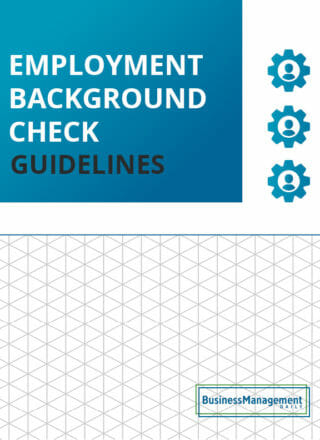Preventing workplace harassment
Recognizing and addressing hostile work environments
While nobody likes dealing with harassing conduct, employers must have policies to prevent it.
Realizing and admitting that you have a hostile work environment can be challenging, especially if you’re a manager or Human Resources professional.
Denial is never the answer, though, as cases of harassment and employment discrimination don’t just resolve themselves. Instead, clear and concise action is required on the part of employers to stop and reduce offensive conduct like:
- Sexual harassment
- Cyberbullying
- Physical harassment
- Offensive jokes
- Discrimination (age, gender, race, etc.)
- Slurs
- Exclusion from employment opportunities like promotions and bonuses
- Threats
Workplace harassment is also shockingly common, as almost half of all employees (48%) have experienced some form of it within the past five years, with 24% being direct targets (Traliant).
Enacting staunch anti-harassment policies at your organization is the best way to safeguard your reputation as an employer and foster a positive working environment.
However, to do so successfully, you’ll need a strong understanding of A) what qualifies as workplace harassment and B) the federal laws surrounding it (which are enforced by the EEOC).
In this article, I’ll teach you everything you need about workplace harassment, so stay tuned to learn more.
Understanding workplace harassment
According to the Equal Employment Opportunity Commission (EEOC), harassment is defined as a form of workplace discrimination that violates:
- Title VII of the Civil Rights Act of 1964
- The Age Discrimination in Employment Act of 1967 (ADEA)
- The Americans with Disabilities Act of 1990 (ADA)
While other laws protect employees against harassment, like the Pregnancy Discrimination Act of 1978 and GINA (Genetic Information Nondiscrimination Act), those three are officially listed on the EEOC website.
They go on to say that harassment is unwelcome conduct that’s based on the following protected characteristics:
- Race
- Color
- Religion
- Sex (sexual orientation, gender identity, and pregnancy)
- National origin
- Age
- Disability
- Genetic information
The EEOC also provides two stipulations for conduct to qualify as workplace harassment:
- Enduring the harassing behavior becomes a condition of continued employment (i.e., they must keep putting up with it to remain employed).
- The conduct is severe enough to create a work environment that a reasonable person would deem hostile, threatening, or abusive.
It’s important to note that petty slights, annoyances, and isolated incidents (unless extremely serious) don’t rise to illegality. If someone at your organization cracks the occasional joke at a co-worker’s expense, but it’s not based on the protected classes listed above, it won’t qualify as workplace harassment.
Also, the EEOC protects employees against harassment and unwelcome conduct after they file a discrimination charge (or testify or participate in a case in any way).
So, if someone at your organization files a discrimination claim against the EEOC, the law prohibits you from chastising them for it. Instead, you must ensure that the employee remains harassment-free during the investigation.
However, the best way to preserve your organization’s reputation is to foster a positive workplace free of discrimination and harassment (more on this in a bit).
The different types of workplace harassment
Unfortunately, workplace harassment can take on many forms, making it difficult to keep track of at times.
For instance, you may not have any cases of sexual or physical harassment taking place. However, that doesn’t mean that cyberbullying isn’t occurring over email and instant messages (through programs like Slack).
Here’s a breakdown of all the different types of workplace harassment so that you can stay prepared.
Sexual harassment
First, let’s examine sexual harassment, which is one of the most prevalent forms of harassment in the workplace.
It’s also one of the most complex, as employees from all genders can be both victims and perpetrators.
Also, there are three distinct types of sexual harassment:
- Quid Pro Quo harassment. ‘Quid pro quo’ is a Latin phrase that translates to ‘this for that.’ In terms of sexual harassment, quid pro quo refers to instances where an employer withholds certain privileges (like advancements and raises) unless their employee provides sexual favors in return.
- Hostile work environment harassment. This type of sexual harassment takes place whenever an employee makes unwelcome sexual advances toward a co-worker (or co-workers) to the point where their work environment becomes threatening and/or hostile. Examples of unwelcome advances include unwanted touching, sexual gestures/jokes/comments, and requests for sexual favors.
- Sexual harassment by employers. If an employee’s superior (such as their manager, supervisor, or executive) is the one conducting the harassing behavior, it qualifies as sexual harassment by their employer.
Discriminatory harassment
Next, let’s define what constitutes discriminatory harassment. These cases require unwelcome conduct to be aimed at a protected class, which once again are:
- Race
- Color
- Religion
- Sex
- National origin
- Age
- Disability
- Genetic information
Federal law makes discrimination against someone based on these protected characteristics illegal. If this behavior occurs at your organization, employees are entitled to file discrimination claims with the EEOC.
Other characteristics, such as marital status, are not protected under federal laws (although some state laws protect it).
It’s important to note that sexual harassment also qualifies as a form of discriminatory harassment since it’s based on someone’s sexual orientation and preferences.
Also, you should know that race, color, and national origin are all separate forms of discrimination.
For example, if co-workers make inappropriate jokes about the color of another employee’s skin, that qualifies as discriminating against their color instead of their race. Conversely, if an employee makes off-color remarks about a co-worker’s race (like being black), that’s racial discrimination.
Lastly, it’s possible to discriminate against someone based on their national origin.
For instance, if employees are mocking a co-worker for being Italian, they’re discriminating against his national origin.
Employers must be aware of the subtle differences between these types of discrimination to foster a harassment-free workplace.
Disability harassment
The Americans with Disabilities Act of 1990 (ADA) guarantees disabled employees are protected against discrimination. This applies to both physical and mental disabilities, as conditions like anxiety and depression can qualify as disabilities if they’re severe enough.
The EEOC defines someone with a disability as someone who:
- Has a physical or mental impairment that substantially limits one or more major life activities.
- Has a history or record of such an impairment (like medical records).
- Is perceived by others as having said impairment (like someone with prominent burn scars on their face).
As you can see, the EEOC does not have an official list of protected disabilities. Instead, any physical or mental condition can qualify as a disability if it meets the above-mentioned stipulations.
If your organization has disabled employees, you may have to provide them with reasonable accommodations to improve their work performance. For example, someone with a severe anxiety disorder may have difficulty focusing in loud office environments.
Providing them with noise-canceling headphones or giving them a secluded office would be a reasonable accommodation for this issue.
If you refuse to accommodate disabled employees, they may initiate the complaint process with the EEOC, but claims are judged on a case-by-case basis.
Also, you’re not required to accommodate employees if their requests will place undue hardship on your business, such as costing you too much money.
Racial harassment
Discrimination becomes racial whenever insults, physical assaults, and other forms of abuse are aimed at an employee’s race.
Examples include sharing racist symbols online, making racist jokes, and excluding employees from certain benefits based on their race. This type of discrimination is protected under Title VII of the Civil Rights Act of 1964.
Online harassment (cyberbullying)
Workplace harassment is not limited to conduct that occurs in person. Cyberbullying is a very real phenomenon, and it can happen at work through channels like email, social media, and instant messaging.
For example, someone could post inflammatory or inappropriate images of a co-worker. They could also share these images through email or on social media.
Additionally, sending threatening emails is a form of online harassment. Finally, making off-hand, racially driven remarks about co-workers through instant messages constitutes harassment as well.
Physical and verbal harassment
Lastly, harassment can be verbal or physical at the workplace, and it is against the law (and not suitable for morale or retention).
These two types of harassment tend to be the easiest to identify due to their nature.
Examples include making offensive jokes, hurling insults, and physically assaulting employees during the workday. Assaults can range from something as minor as a push to something as severe as a fistfight (or worse).
It’s essential to take a zero-tolerance approach to this type of harassment, as letting it get out of hand will seriously harm your reputation, morale, and productivity.
Tips for preventing workplace harassment from occurring in your organization
Okay, let’s discuss the best ways to prevent harassment in your business.
As stated before, strong anti-harassment policies are the best way to foster a discrimination-free workplace. However, there are other steps you can take, so let’s look at them all.
Provide in-depth anti-harassment training for all managers
Your managers are your first defense against workplace harassment and need adequate training.
However, showing managers a simple PowerPoint presentation won’t cut it.
Instead, you need to get hands-on with things like:
- Real-world case studies (find instances of actual harassment cases and study what went wrong and what managers could have done)
- Fictional scenarios (have managers act out different harassment scenarios)
- Providing managers with feedback related to how well they handle harassment conflicts
Lastly, give your managers positive incentives to improve their harassment management skills, like rewarding them with gift cards or unique privileges whenever they solve a conflict.
Create clear anti-harassment policies
Writing significant anti-harassment policies is only one half of the equation. After you’ve created them, you have to share them with your employees in as many ways as possible.
Provide your employees with employee handbooks, list your policies online, and post them in common areas (like the break room). These constant reminders will burn your anti-harassment policies into your employees’ brains, which is good.
After all, the last thing you want to happen is for one of your employees to harass someone and not know that it could get them in trouble.
Study federal and state harassment laws
It’s always a good idea to know the law, especially regarding workplace harassment. Besides brushing up on the federal laws in this article, you should also research your specific state laws related to harassment, as they may contain additional protections (like for marital status).
The more familiar you are with the law, the less likely it is that one of your employees will land you in hot water with the EEOC.
Take a zero-tolerance approach to certain violations
While you should always give employees second chances and ways to improve, there are certain types of harassment that you should treat with zero tolerance.
For instance, you could make it so that physically assaulting another employee will result in immediate termination.
It’s up to you which types of discrimination you want to take a zero-tolerance approach, but they should be severe. Minor violations, such as a heated argument or off-hand remark, should receive more leeway.
However, it is valuable to let your employees know that certain behaviors, like physical violence, will not be tolerated.
Provide inclusion training for employees
To limit the amount of racial and sexual discrimination in your workforce, you should provide inclusion training for your staff.
This type of training stresses the importance of accepting others, embracing differences, and learning to work with co-workers of all kinds. It shouldn’t be a one-off. Instead, hold regular training sessions to reinforce your stance on fostering a diverse, inclusive workforce.
Also, encourage your employees to report harassment wherever they see it, even from an executive or their direct manager.
Considering this, you should set up anonymous reporting lines so your employees have a safe, reliable way to report workplace harassment.
Final thoughts: Workplace harassment
Here’s a recap of what we’ve covered so far:
- Workplace harassment can take many different forms, and certain types are protected under federal and state laws.
- Harassment can be discriminatory, sexual, racial, physical, verbal, and online.
- Preventing workplace harassment is the best way to avoid harming your reputation and getting in trouble with the EEOC.
More resources:
ADA compliant substance abuse policy ![]()
Managing up: What it is, what it isn’t, and how to do it right ![]()
How to properly terminate an employee with mental health issues ![]()





